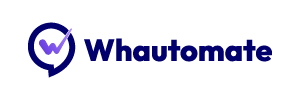Is your healthcare practice optimized for efficiency and patient satisfaction? Healthcare success depends on skilled healthcare professionals caring for their patients and technology. We’re here to provide a comprehensive guide to integrating cutting-edge tools and methods that revolutionize healthcare service delivery.
In this article, we delve into groundbreaking strategies to harness the power of chatbots, communication tools, and telehealth software. Follow them, and you’ll enhance every aspect of patient care, including initial contact to ongoing treatment and follow-up.
Let’s learn how to streamline your operations and significantly elevate the patient experience.
Why Should I Streamline Communication & Improve Patient Care in Healthcare?
It helps to start with a firm reason to streamline because it will take much work and dedication. Committing to this tech-empowered path is worth the time, effort, and investment for several compelling reasons.
Because of these benefits, the health tech industry will likely grow to $350 billion to $410 billion in annual value by 2025. Here are several key benefits that you should know about.
- Efficient communication leads to quicker, more accurate responses to patient needs, improving diagnoses and treatments.
- Streamlining reduces delays and errors, allowing healthcare systems to treat more patients effectively in less time.
- Clear communication enhances patient understanding and engagement, leading to higher satisfaction.
- Minimizing inefficiencies and errors saves costs, which can be reinvested in further improving healthcare services.
- Effective communication ensures that all healthcare team members are aligned, especially in complex cases.
- Streamlining communication lowers the likelihood of medical errors, enhancing patient safety.
- Effective systems help meet legal standards, avoiding potential issues and penalties.
- A streamlined communication system makes integrating new technologies easier, continually enhancing care quality.
- Efficient communication decreases healthcare workers’ stress, leading to better patient care and lower burnout rates.
- Effective healthcare communication improves disease control and prevention, improving overall community health.
How to Streamline Communication & Improve Patient Care
These seven ideas should be a great starting point to start this streamlining and patient care upgrade. Many of them will use chatbots, communication tools, and telehealth software:
1) Automated Appointment Scheduling
Integrating tools like chatbots for online appointment scheduling not only streamlines the process but also enhances the patient experience by offering flexibility and reducing wait times. For healthcare providers, online scheduling tools can ease administrative tasks, freeing up staff to focus on patient care.
These online appointment scheduling systems also help maintain accuracy in bookings and allow providers to track and manage patient flow more efficiently. By adopting such systems, healthcare facilities can improve operational efficiency and patient satisfaction, making it a win-win for both parties.
We highly recommend using Chatbots on WhatsApp because of its security, popularity, and user experience. These bots can interact with patients to find suitable time slots, send reminders, and even reschedule appointments.
Providing a convenient and accessible healthcare appointment management platform through chat reduces administrative workload. Integrating with WhatsApp cloud API will also secure and efficiently handle patient data.
2) 24/7 Patient Support Through AI Chatbots
Implementing AI chatbots integrated with the health care system can also provide round-the-clock support to patients. WhatsApp chatbots or any other platform bot can answer common queries, provide health tips, and guide patients through basic self-assessment procedures.
Providing this service gives patients immediate assistance, which can be vital when managing minor health issues and preventing complications. Continuous support from these AI chatbots emphasizes the importance of accessible healthcare systems.
3) Integrated Communication Platforms for Healthcare Teams
Developing an integrated communication platform that connects all healthcare system components. Such communication platforms can give instant messaging, file sharing, and real-time updates on patient status. Communicating with these tools fosters a more coordinated approach to patient care. It will also minimize errors and speed up decision-making.
4) Patient Education Through Interactive Chatbots
You can also use chatbots and other telehealth tools to educate patients about their conditions, medications, and healthcare practices. These technologies reinforce the importance of health literacy.
Use tools to provide personalized information, answer queries, and even send educational videos or articles. Educating patients empowers them to make informed decisions about their health. This leads to better health outcomes and more effective management of chronic conditions.
5) Telehealth Software for Remote Consultations
Telehealth software has revolutionized the components of healthcare systems by enabling remote consultations. This is particularly beneficial for those with mobility issues or living in remote areas.
Telehealth consultations can include video calls, secure messaging, and digital monitoring of health parameters, ensuring comprehensive patient care. Implementing these will make healthcare more convenient and reduce the strain on healthcare facilities.
6) Feedback and Follow-Up via Communication Tools
Gathering patient feedback and conducting follow-ups is a strategic way to improve the functions of healthcare systems. Regular follow-ups ensure patients adhere to their treatment plans and allow for timely adjustments. Feedback will also help your organization or team better understand your patients’ needs and pinpoint areas of improvement.
7) Emergency Alert System through Chatbots and Telehealth
Incorporating an emergency alert system within chatbots and telehealth platforms can be vital to healthcare systems. This system can quickly connect patients with emergency services or healthcare providers in critical situations.
Such systems are crucial in saving lives and handling urgent health crises by providing immediate access to medical assistance. This demonstrates the importance of incorporating advanced technology in healthcare for effective crisis management.
It’s Time to Adopt
By adopting these strategies, healthcare providers can significantly improve patient outcomes, increase efficiency, and reduce costs. More importantly, it benefits the patient, enhancing individual patient care and contributing to the broader public health goals.
Embracing this shift towards a more integrated, patient-centric model is key for healthcare professionals aiming to lead in their field and positively impact the future of healthcare. In doing so, we will become true Healthcare Heroes and examples of excellence and innovation in patient care.

